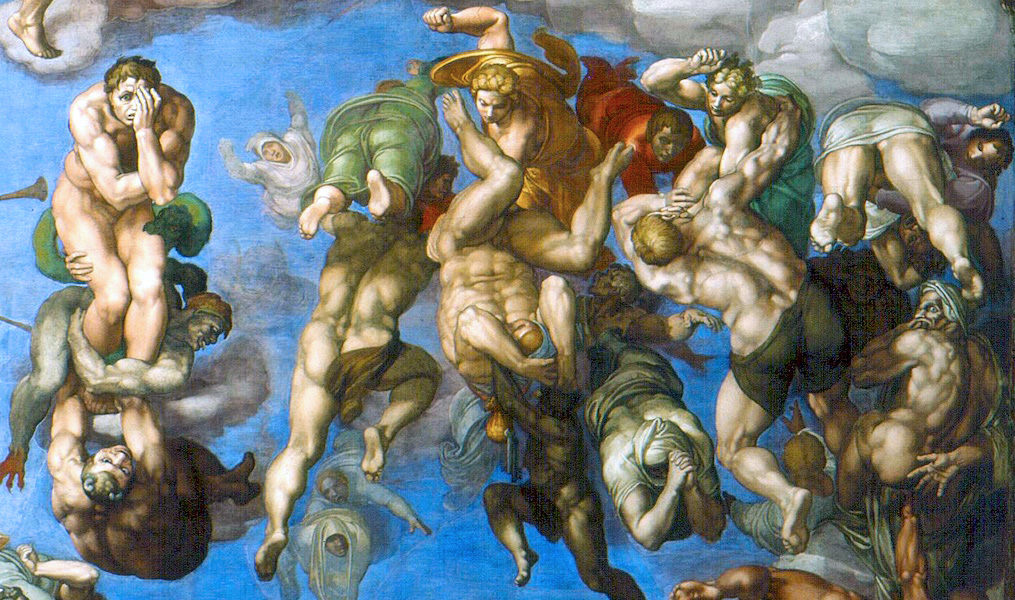Clement VII
Giulio di Giuliano de’ Medici reigned from 1523-1534 as Pope Clement VII. He brought to the Papal throne a high reputation for political ability and possessed all the faculties of a shrewd diplomat. Yet all of those skills seemed to evaporate as soon as he ascended to the Throne of Peter. Mistake after mistake was made by the Pope, who seemed to misjudge every situation before him. Never before had there been a Pope who could be counted on to make one bad decision after another.
Giulio de’ Medici was the illegitimate son of Giuliano de’ Medici and was raised by Giuliano’s brother, Lorenzo the Magnificent. In 1513, his cousin, Pope Leo X made him Archbishop of Florence and a Cardinal. Giuliano influenced Leo’s policies and also planned some impressive works of art to honor his family, but once he was in power he became indecisive and had difficulty grasping the extent to which problems could magnify. His inability to stand strong against the powers of France and the Holy Roman Empire made an unstable situation worse.
As Pope, Clement wasn’t up to the challenge of the Reformation. He failed to understand the significance of the Lutheran movement and allowed his involvement in Europe’s political sphere to reduce his effectiveness in spiritual matters. Emperor Charles V had supported Clement’s candidacy for Pope and he saw the Empire and the Papacy as a partnership. However, Clement allied himself with Charles’ longtime enemy, Francis I of France, in the League of Cognac. This rift eventually resulted in the imperial armies, led by Pompeo Cardinal Colonna, to attack Rome and imprison Clement in the castle of Sant’Angelo. The army pillaged and gained control of the whole of Rome in the Cardinal’s name. The humiliated Pope promised to bring the Papal States to the Imperial side again, but soon found himself alone once more. The Duke of Ferrara had sided with the Imperial army, permitting the mercenary army of Charles III (the Duke of Bourbon) to reach Rome and begin its attack on the city. To make matters worse, Charles of Bourbon died during the siege, but rather than return to their homeland, the unpaid and leaderless troops felt free to ravage Rome in May of 1527. The innumerable series of murders, rapes and vandalism that followed forever ended the splendors of the Renaissance Rome. Clement was kept as a prisoner in Castel Sant’Angelo for six months. It was while in prison that the most far-reaching of his decisions was made. King Henry VIII of England, sought to have his marriage to Catherine of Aragon annulled. Clement needed to keep the peace with Henry, but Catherine happened to be the aunt of his captor, Charles of France. Clement initially reserved judgment on the matter, but under pressure from Charles, the Pope finally had the case transferred to Rome in 1529, which excommunicated Henry in 1533, leading to the English Reformation.
After having bribed a number of Imperial officers, he escaped disguised as a peddler and took shelter first in Orvieto and then in Viterbo. He came back to a depopulated and devastated Rome in October 1528. Subsequently, the Pope followed a policy of subservience to the Emperor and although his agenda included fighting against the reformation, his stance was weak. His final act as Pope has had long-standing results; just a few days before his death, he ordered Michelangelo’s painting of The Last Judgment in the Sistine Chapel.
This is our last installment of the series. We hope you have enjoyed the fascinating stories of some of history’s most notorious Popes.





